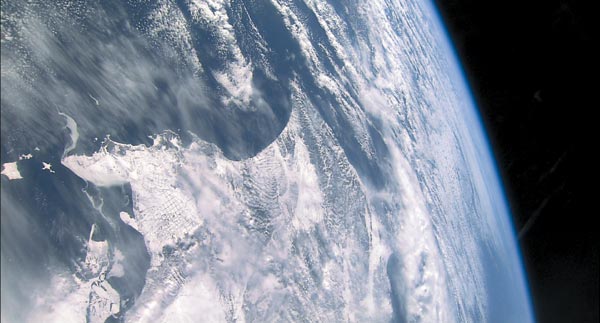|
High-definition cameras show their stuff in space
Japan Broadcasting Corporation (NHK)
Written by Sanada Kuniko
The high-definition television technology developed by Japan Broadcasting Corporation (NHK) produces five times the data that conventional TV stations can broadcast. High-definition images are remarkably like the real thing.
High-definition imaging is admired worldwide, and caught NASA's attention some years ago. In 1990, a high-definition camera and videotape recorder had a combined weight of about 200 kg, and needed 2 kilowatts of electric power. NHK began working with Sony to develop a camcorder, a high-definition camera with a videotape recorder. It weighed only 8 kg and consumed just 40 watts of energy. It was released in 1998.
This achievement brought forward the day when high-definition cameras could be sent into space. Yamazaki Jun-ichi, the chief engineer of NHK's technical department and a member of the space development project, says, "Before the camera could be taken on a space shuttle, it had to pass about 30 strict safety and function criteria. It took more than half a year and many technicians to test it and make the required improvements."
They finally developed a high-definition camera that met space specifications, and it went up on the space shuttle Discovery in 1998. For the first time, astronauts took images of the Earth using high-definition technology.
Live high-definition broadcasts from the international space station to the Earth became possible this year, 2003, through the improved data processing capacity of the image compression system.
High-definition technologies will surely be used for other purposes besides broadcasting. Yamazaki explains, "According to tests conducted by NASA, high-definition colors are close to natural colors, so our technology is far better suited for observing the Earth than conventional video and image technology. Our system can pick up the narrow tributaries of rivers, something not possible before. Another example: with video capability, we can see moment-by-moment changes in a forest fire situation, and use this information to protect people and fight the fire."
Future challenges include taking night pictures of the Earth, and 3D photography of the international space station. These ambitions may soon be realized.
|

